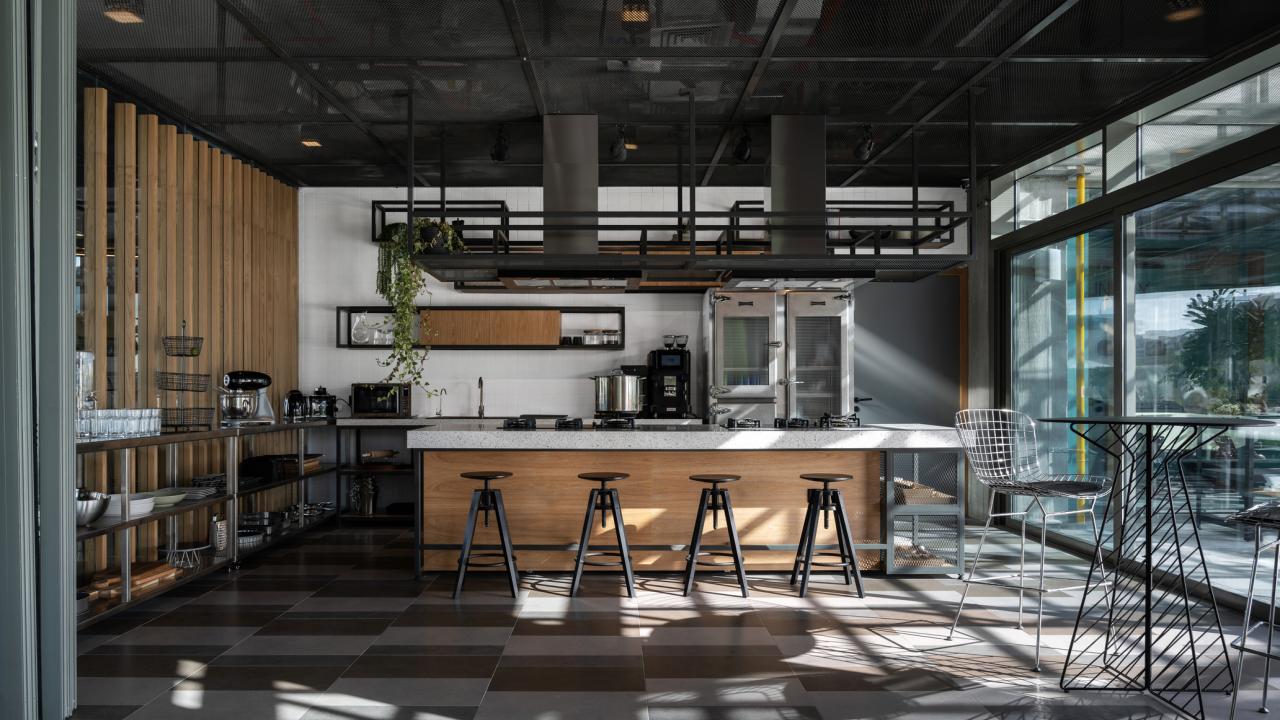With the growing popularity of coliving as an urban housing alternative, HIVE Coliv in Jumeirah Village Circle-Dubai, stands as a conscious lifestyle choice for individuals seeking independence while relishing the advantages of a like-minded community. With the interiors crafted by the renowned Fadi Sarieddine Design Studio, this residential project for HIVE and A.R.M. Holding embodies a holistic approach to intelligent urban design, wellbeing, and sustainable living.
Started in 2019 and completed in 2021, HIVE Coliv for ARM Holding sets the precedent as the first coliving building in the region. Fadi Sarieddine, explains that the objective was to create a structure that is both recognizable and inviting. The design seamlessly integrates fluid spaces that foster communal interaction, informed by extensive research and analysis of coliving spaces in London, Amsterdam, and Eindhoven. The team delved into understanding potential residents' life patterns to facilitate a harmonious flow within the living environment.
The coliving apartment building showcases a stunning design that incorporates American white oak furniture and joinery elements, a testament to the holistic approach encompassing smart urban living, wellbeing, and sustainability. Utilizing approximately two cubic meters of white oak lumber (sawn timber) and an abundance of white oak veneer, the space exudes a serene and inviting atmosphere that promotes physical and mental health among residents.
Expanding on the choice of white oak for the project, Fadi Sarieddine says, “Oak, as a wood finish, invokes many meanings, mostly due to our collective memory and its association with its legacy such as its use in barrels and boxes. For me personally, oak is a material that suggests youth, freshness, informality and at the same time cosiness and a warm tactility and texture. Such attributes were essential for the look and feel of HIVE communal areas as well as its private homes. Oak was combined in certain areas with walnut to accentuate the visual contrast. The end result turned out to be pleasant and timeless at the same time.”
The interior materials, including screed, porcelain tiles, fair-faced concrete with wood mould texture, metal and metal mesh, GI corrugated sheet, and woodwork for furniture and shelving, are intentionally simple and elemental. The building lobby, serving as the central communal space, features an 18-meter-long wall unit/space divider that defines the area, while a cleverly incorporated corrugated sheet element demarcates an outdoor BBQ space, penetrating the façade.
Meeting the allocated budget was a central challenge for the project. Fadi Sarieddine emphasizes the team's commitment to designing efficiently from the outset, avoiding the need for compromises on design integrity during later stages. The intentionally bold and straightforward design garnered deep appreciation upon witnessing the final product.
By thoughtfully integrating smart technologies, wellbeing-focused interiors, and sustainable materials and practices, HIVE Coliv offers residents a superlative living experience. Comprising 117 apartments spanning a total area of 1500 sqm, the development fosters a profound sense of community, shared experiences, and affordable living. The construction, undertaken by Aroma International Building Contracting, was completed within a year while complying with Dubai's Green Building regulations. The design firm opted for locally sourced, low-tech, and low carbon print materials. Notably, all apartments feature operable windows, allowing tenants to embrace natural ventilation during the winter months.
Roderick Wiles, AHEC Regional Director adds, “All the American white oak lumber used for the furniture and joinery in HIVE Coliv would have arrived carbon negative in the UAE, despite all the processes of extraction, production and kiln-drying, as well as the long sea route from the East Coast of the United States. We can also demonstrate that the two cubic metres of white oak lumber used in the project would be replenished in the US hardwood forest in just over 3 seconds through natural regeneration.”
***
Photography by:
Oculis Project
Natelee Cocks




